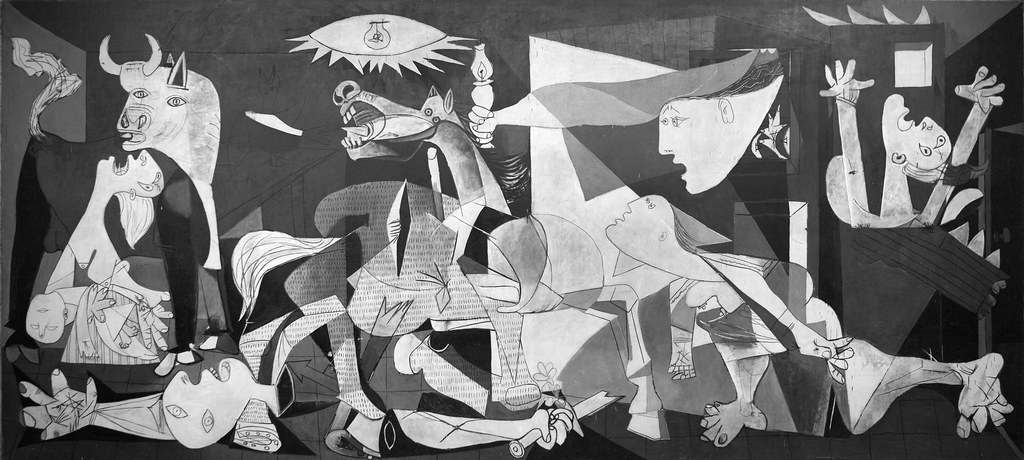
Horrors of war, human suffering, chaos of detached body parts and shouts of pain, mourning of family members buried under rubble, those are inevitable consequences of conflicts and have been reflected in art that revolves around pacifism and freedom.
Anti-war art is established as a form of expression that has been practised by humans throughout centuries. The horror of war has been depicted as early as in the era of Impressionism, with artists such as Winslow Homer who reflected the state of split nation of America during the Civil War in his paining ‘Home, Sweet Home’. Whenever there are wars, there will be artists inspired by the suffering arround them, using their creative voice to spread light inside of darkness.
Anti-war art is established as a form of expression that has been practised by humans throughout centuries
One of the best known and most recognisable works of anti-war art is ‘Guernica’, painted by the famous Pablo Picasso. I had a pleasure of seeing the painting in real life, as it is currently in the Museum of Reina Sofía in Madrid. The enormous size of it leaves a grand first impression. The complexity of symbolism that speaks through it is what’s most remarkable about this painting from 1937.
The horrible act of bombing a small Basque town was the main inspiration for Picasso, however, the work has become a crucial parallel to many modern conflicts. That would be because it portrays the pure form of human suffering, through its use of shapes and colours. The grey, white and black colour palette itself demonstrates the sadness of lives being taken, making the artwork highlight the darkness of war crimes through the contrasting white and black.
The severed limbs, lying in the bottom of the painting, are mixed with the one of the horse that is placed in the centre of the painting, as if the mass of men and women accumulated in the centre lost all of its human dignity. One other symbol that is frequently mentioned in the artistic interpretations of the work is the bull, often seen as the represetation of Franco’s regime.
In the museum, it is also possible to see sketches that the artist did before deciding on the final composition. In some of them, the scene was not rectangular but square and also more dynamic, which was sacrificed because of the enormous size of the mural.
‘It’s up to the public to see what it wants to see’ said Picasso, leaving the artwork open to interpretation. For example, the eye that has its place at the top of the painting has either been see as a symbol of a bomb or even the eye of God himself, witnessing the scene. With such a number of details, it’s good to contemplate the mural by yourself, taking in the amount of suffering portrayed carefully with dismembered creatures and other symbols of pain. ‘Guernica’ is definitely a timeless war representation that forces people to stop and think of what tragedy can one human do to another.


